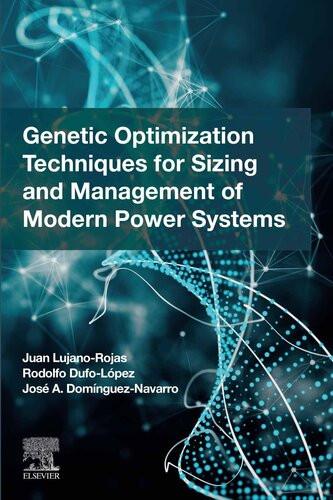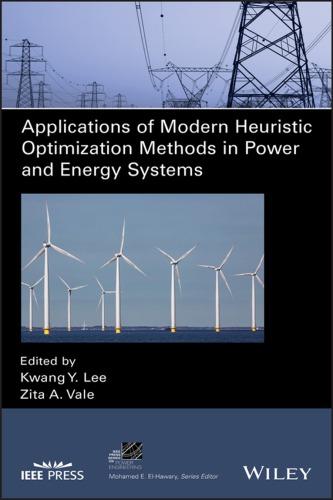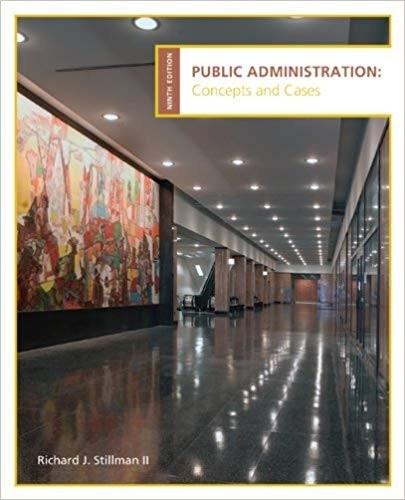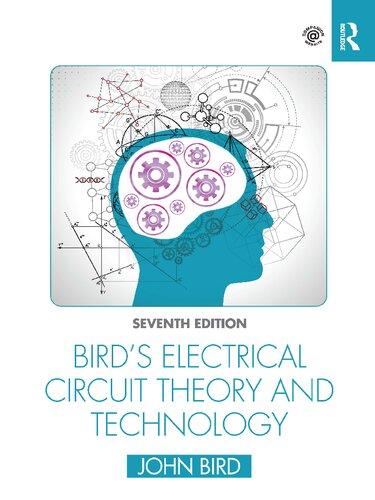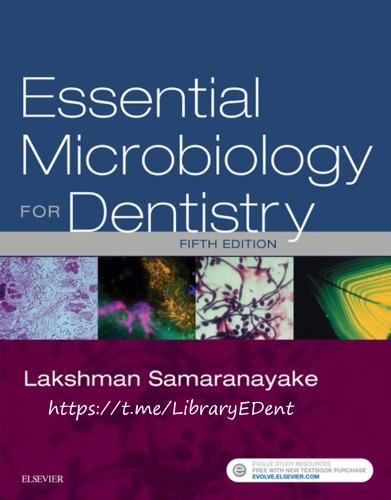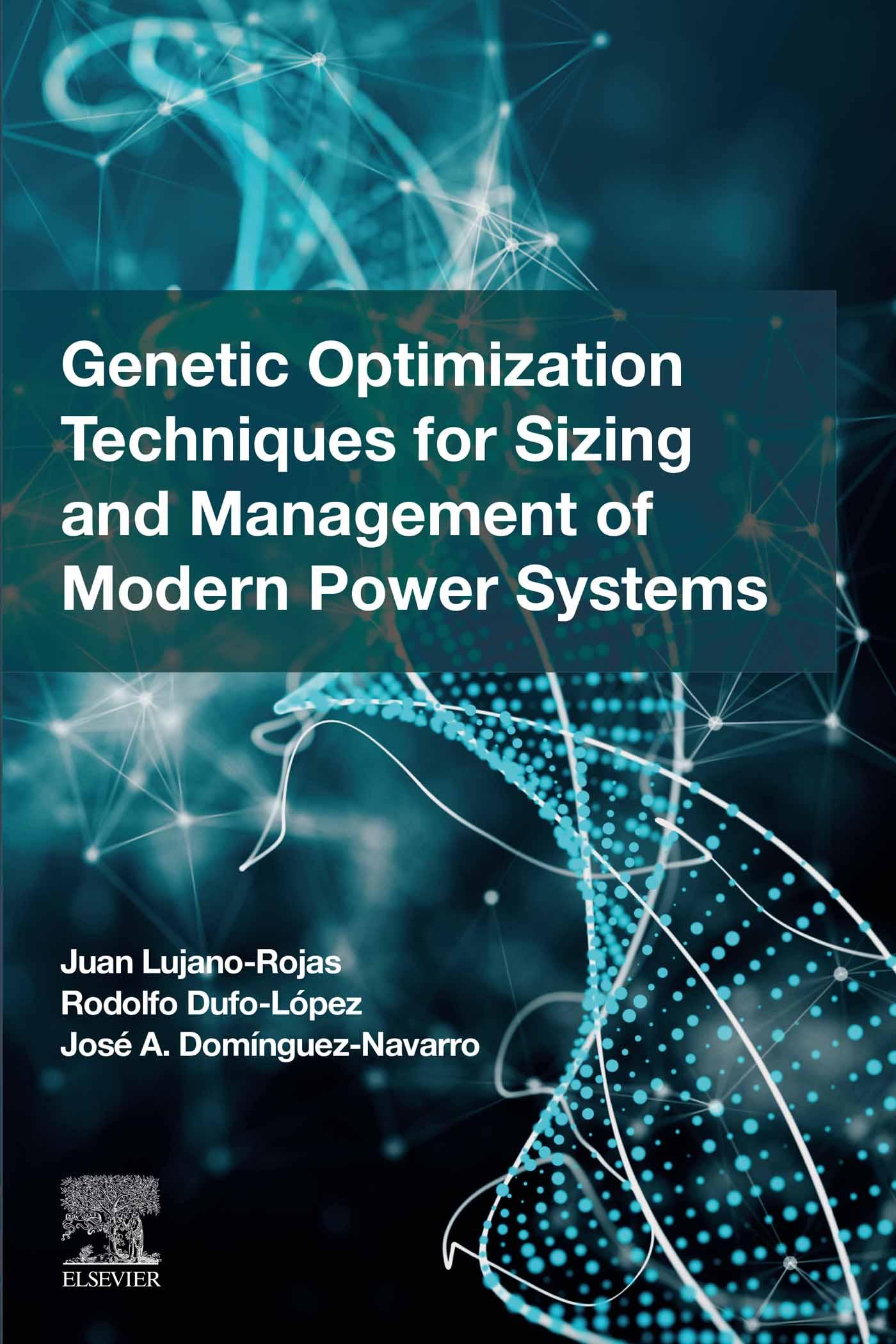Table of Contents
Cover image
Title page
Copyright
Acknowledgment
1: Introduction to optimization techniques for sizing and management of integrated power systems
Abstract
1 1: Heuristic optimization techniques
1.2: Basic implementation of particle swarm optimization
1.3: Case studies
1 4: Conclusions
References
2: Genetic algorithms and other heuristic techniques in power systems optimization
Abstract
2.1: Evolution and development of genetic algorithms
2.2: General formulation of an optimization problem
2.3: General structure of a genetic algorithm
2.4: Basic implementation of a genetic algorithm
2.5: Case studies
2.6: Other heuristic techniques
2.7: Conclusions
References
3: Estimation of natural resources for renewable energy systems
Abstract
3.1: Development of renewable energies
3.2: Natural resources and renewable energy systems
3.3: Training a neural network using a genetic algorithm
3.4: Case study
3.5: Conclusions
References
4: Renewable generation and energy storage systems
Abstract
4.1: Wind generation
4.2: Solar photovoltaic generation
4.3: Inverter
4.4: Conventional generation
4.5: Battery energy storage systems
4.6: Economic dispatch by genetic algorithm
4.7: Unit commitment combining priority list and genetic algorithm
4.8: Day-ahead battery management by genetic algorithm
4 9: Design of hybrid systems by genetic algorithm
4.10: Case studies
4.11: Conclusions
References
5: Forecasting of electricity prices, demand, and renewable resources
Abstract
5.1: Benefits of an accurate forecasting system
5.2: Forecasting techniques
5.3: Uncertainty management
5.4: Using a neural network for forecasting purposes
5.5: Scenario reduction using a genetic algorithm
5.6: Case studies
5.7: Conclusions
References
6: Optimization of renewable energy systems by genetic algorithms
Abstract
6.1: Introduction
6.2: Main options
6.3: Input data
6.4: Presizing
6.5: Optimization data
6.6: Economic calculations
6.7: Optimization by GA or MOEA
6.8: Examples of application
6.9: Conclusions
References
7: Operation and management of modern electrical systems
Abstract
7.1: Energy policy and environmental problems
7.2: Energy sources and commodities
7.3: Energy system models
7.4: Optimal power flow
7.5: Solving the optimal power flow by genetic algorithms
7.6: Case studies
7.7: Conclusions References
Index
Copyright
Elsevier
Radarweg 29, PO Box 211, 1000 AE Amsterdam, Netherlands
The Boulevard, Langford Lane, Kidlington, Oxford OX5 1GB, United Kingdom
50 Hampshire Street, 5th Floor, Cambridge, MA 02139, United States
Copyright © 2023 Elsevier Inc. All rights reserved.
No part of this publication may be reproduced or transmi�ed in any form or by any means, electronic or mechanical, including photocopying, recording, or any information storage and retrieval system, without permission in writing from the publisher. Details on how to seek permission, further information about the Publisher’s permissions policies and our arrangements with organizations such as the Copyright Clearance Center and the Copyright Licensing Agency, can be found at our website: www.elsevier.com/permissions.
This book and the individual contributions contained in it are protected under copyright by the Publisher (other than as may be noted herein).
Notices
Knowledge and best practice in this field are constantly changing. As new research and experience broaden our understanding, changes in research methods, professional practices, or medical treatment may become necessary.
Practitioners and researchers must always rely on their own experience and knowledge in evaluating and using any information, methods, compounds, or experiments described herein. In using such information or methods they should be mindful of their own safety and the safety of others, including parties for whom they have a professional responsibility.
To the fullest extent of the law, neither the Publisher nor the authors, contributors, or editors, assume any liability for any injury and/or damage to persons or property as a ma�er of products liability, negligence or otherwise, or from any use or operation of any methods, products, instructions, or ideas contained in the material herein.
ISBN: 978-0-12-823889-9
For information on all Elsevier publications visit our website at h�ps://www.elsevier.com/books-and-journals
Publisher: Charlo�e Cockle
Acquisitions Editor: Graham Nisbet
Editorial Project Manager: Aleksandra Packowska
Production Project Manager: Kamesh Ramajogi
Cover Designer: Miles Hitchen
Typeset by STRAIVE, India
1: Introduction to optimization techniques for sizing and management of integrated power systems
Abstract
In this chapter, the authors briefly describe some of the most popular heuristic techniques, including ant colony optimization algorithm, genetic algorithm, gravitational search algorithm, and particle swarm optimization (PSO), among many others. In addition, the basic implementation of PSO is described and illustrated by solving several optimization problems considering the Griewank, Rastrigin, Rosenbrock, Ackley, and Schwefel test functions. In addition, the economic dispatch problem with prohibited operating zones and valve-point loading is used to illustrate PSO capabilities, observing reasonable results. Finally, the daily management of ba�ery energy storage devices in an isolated hybrid energy system is also discussed.
Keywords
Heuristic techniques; Particle swarm optimization; Economic dispatch; Generator prohibited operating zones; Generator valve-point loading
1.1: Heuristic optimization techniques
With the progress of science and technology, investigators from different fields have created a vast family of heuristics based on natural processes. These optimization techniques have been used in the solution of many problems in electrical engineering. In this section, we briefly describe the
working principles of some of the most important algorithms. Most of the mathematical formulations presented in this section are used for illustrative purposes without following any strict format.
1.1.1: Ant Colony optimization algorithm
A popular method known as the ant system (Dorigo et al., 1996) is inspired by the behavior and aptitudes of ant colonies. Ant colony optimization (ACO) is a population-based algorithm with versatility and robustness. It can be applied to many combinatory problems with only a limited number of changes in its structure.
In the ACO, each ant is considered as an agent participating in the search process. Pheromone trails inspire information exchange among the agents. The ants use these trails in the colony to share information about the shortest route to the food source. Thus, an ant on the optimal path follows a strong pheromone trail left by the rest of the colony, while an ant following a weak trail moves randomly. It is essential to highlight that an ant on a determined route also leaves its own pheromone trail on the way. The accumulative quantity of pheromones on a specific route determines how a�ractive this route is for the colony.
The intensity of the trail (ζij) laid by the ants when they travel from a point i to j at a determined time t after n iterations of the algorithm (every n iterations the ants complete a tour) is shown in Eq. (1.1) (Dorigo et al., 1996):
(1.1)
where ρ is a parameter used to model the evaporation of the trail once the ants have completed a tour. This means between the intervals t and t + n. Furthermore, Δ ςij is the cumulative amount of pheromones laid by the group between the steps t and t + n.
Regarding the agent model, this is very basic. Each ant or agent makes its next movement according to a probability determined by the distance to the next stage of the route and the trail left by other ants that previously stopped at that stage. Even when the mathematical model is simple, the
work of a massive number of agents in a collective and consolidated manner makes ACO a powerful optimization tool. A positive feedback loop mathematically represents the cumulative effect of a pheromone trail over a specific route. The probability of following this route increases with the number of ants that have chosen it.
Although natural ant colonies inspire the algorithm, it employs artificial ones. Artificial ant colonies live in an environment with discrete time, have limited memory, and are not blind. Additionally, the feasibility of each route or solution to the optimization problem is forced using a tabu list.
As previously stated, the probability of an ant transitioning from one stage to another one depends essentially on the pheromone trail and the distance. To this end, the decision maker (DM) adjusts several parameters related to the trail, the visibility of the next stage, the persistence of the trail, and the amount of pheromone left by the other ants.
Eq. (1.2) (Dorigo et al., 1996) shows the probability (pijk(t)) of moving from a point i to j at time t for the ant k. This is the expression for valid transitions, which are included using a tabu list. The parameters α and β are used to represent the importance of the pheromone trail and route visibility (ηij).
Depending on the values of these parameters, the DM could observe the stagnation of the optimization process and good and bad solutions. Specifically, bad solutions with stagnation appear when the trial’s relative importance is adjusted to a high value. Under these circumstances, the algorithm stagnates rapidly without finding a good solution. Bad solutions without stagnation occur in the contrary case when the relative importance of the trial is adjusted to a low value. With these se�ings, the algorithm cannot find good solutions. Finally, the DM can find reasonable
solutions when the importance of the trial and the visibility are set to fair values.
Researchers have compared ACO with other essential techniques such as simulated annealing, neural networks (NNs), self-organizing maps, and genetic algorithms (GAs) (Dorigo & Gambardella, 1997). According to the reported results in the literature, ACO offers solutions as good as those found using the methodologies above. Furthermore, scientists determined essential characteristics that could be improved to face larger optimization problems. First, ACO could be initialized with other local optimization heuristic results to increase algorithm efficiency. Second, ACO could be parallelized to distribute the computational burden over several processors, reducing the time and the dependence on the number of ants. Third, families of ants and specialized heuristics operators could be incorporated to increase the search capabilities.
Following these research directions, the original algorithm has been enriched by adding the subroutine daemon (Dorigo et al., 1999). Daemon collects relevant information for global optimization and modifies the pheromone trails to guide the colony in the global-optimum direction. Another improving characteristic is the pseudo-random-proportional rule and the implementation of a candidate list of preferred locations to visit from a specific point.
Stü�le and Hoos (2000) introduced the max-min ant system (MMAS) to take advantage of the best solutions found during each iteration and avoid stagnation during the first iterations of the optimization process. Thus, after each iteration, in MMAS, only one ant adds a pheromone to the trail. This ant could be that with the best performance during the current iteration or with the best solution found until the present iteration. MMAS avoids stagnation at the beginning of the optimization process by limiting the pheromone trail to a determined interval. Finally, MMAS initializes the pheromone trail to the maximum allowed value to increase exploration during the early stages of the optimization process.
ACO and MMAS have been applied to solve many optimization problems, such as the traveling salesman problem (TSP), quadratic assignment problem, job-shop scheduling problem, and vehicle routing problem. In TSP, the optimal global solution can be found when considering up to 64 locations. However, the incorporation of parallel computing increases the capabilities of these techniques to solve problems of a higher dimension.
Recently, Skinderowicz (2020) presented a discussion related to the implementation of MMAS using parallel computing in a graphics processing unit. The author analyzed TSP considering dimensions between 198 and 3795 cities, observing a reduction in the computational time by a factor between 7.18 and 21.79.
1.1.2: Artificial bee colony algorithm
Another nature-inspired technique is the artificial bee colony (ABC) (Karaboga & Basturk, 2007) algorithm. It is based on the behavior of natural honey bees. This algorithm identifies three types of bees: the employed, onlookers, and scouts bees. The algorithm recognizes the dancing area in the hive as a place for information exchange and the location of the food source as the crucial aspect during the optimization process.
The onlooker bees remain in the dancing area, thinking and selecting the appropriate food source. The employed bees go to a food source chosen previously, and the scout bees are in charge of finding new food sources using a random search process. Initially, half of the bees in the colony are considered employed, while the remainder are considered onlookers. Each employed bee works on exploiting one food source; therefore, the number of employed bees is equal to the number of food sources. If a food source has been exhausted, the employed and onlooker bees become scouts to find a new food source.
According to the information stored in the bee’s memory, ABC sequentially locates the employed and onlooker bees in a food source. Then, the algorithm places scout bees randomly to find new food sources. This process is repeated until a specific condition previously established by the DM is reached.
During the early stage of the algorithm, ABC requires an initialization process. This process consists of se�ing the position of the food sources randomly. Then, the employed bees explore these locations and determine the nectar quantity. After that, the employed bees go to the hive and inform the onlooker bees about the nectar quantities. Once an employed bee explores a route to the food source, the insect memorizes its position. Then, it goes back to that area and selects another food source based on the analysis of visual information.
The onlooker bees give priority to those food sources with high amounts of nectar. Thus, those food sources with high nectar
concentrations will be more likely to be exploited during the subsequent iterations. The probability (pi) of choosing a food source i is given by Eq. (1.3) (Karaboga & Basturk, 2007):
where fiti is the fitness of individual i in the population. When a specific location is exhausted, the scout bees randomly search to find new food sources.
Concerning a specific optimization problem, the location of a determined food source represents a solution to the optimization problem. The nectar quantity represents the objective function to be minimized or maximized. The number of employed and onlooker bees is equal to the number of solutions considered by DM.
ABC starts by randomly se�ing the location of the food source. This is carried out by adjusting the initial population with random numbers. The position of the food source is a vector whose dimension is equal to the number of the variables of the optimization problem. Once ABC has been initialized, the position of the food sources will continuously change while the optimization process evolves. Specifically, the interaction between employed and onlooker bees creates a displacement in the location of the food source. ABC uses Eq. (1.4) (Karaboga & Basturk, 2007) to determine the position of the food source (vij) at a determined iteration from the previous one.
The indices k and j are chosen randomly. The term Φij is a random number used to specify a new position close to xij.
ABC offers high-quality solutions similar to those obtained from the implementation of other well-known approaches such as differential evolution (DE), particle swarm optimization (PSO), and GA (Karaboga & Akay, 2009; Karaboga & Basturk, 2008). Relevant problems of science and engineering related to data clustering have been effectively solved using ABC (Karaboga & Ozturk, 2011).
1.1.3: Bacterial foraging algorithm
The bacterial foraging algorithm (BFA) is inspired by the behavior of a specific bacteria known as Escherichia coli. E. coli is provided with pili and flagella. The pili allow the transfer of genes from one bacterium to another, while the flagella are used for bacterium mobility (Passino, 2002).
From an engineer’s perspective, E. coli has a control system with the flagellum working as an actuator, the receptor proteins working as sensors, and a closed-loop to determine how the bacterium moves in different environments. Thus, the bacterium carries out a search process looking for food and avoiding areas with harmful substances. Under realistic conditions, if E. coli is located in an alkaline or acid environment, it swims toward a neutral environment using its abilities (Passino, 2002).
Each flagellum is a helix connected to the cell. When the base of the flagellum (the connection point with the cell) rotates counterclockwise, the flagella form a bundle that works as a propeller, resulting in a force that pushes the cell. Then, the bacterium swims in a specific direction. If the flagella rotate clockwise, they work independently of each other, pulling at the cell, the net result being that the bacterium tumbles. In general, E. coli can swim for a specific period, and it can tumble for another period (Passino, 2002).
When bacteria are in an environment with chemical a�ractants and repellants, they perform motion pa�erns known as chemotaxes. In E. coli, serine or aspartate produces a�ractant a�itudes, while the metal ions Ni and Co, modifications in pH, and amino acids have repellant a�itudes (Passino, 2002).
If E. coli is located in a neutral environment for a long time, the flagella will rotate clockwise and counterclockwise. In other words, the bacterium will tumble and swim, resulting in a random movement of the bacterium.
Suppose E. coli is located in an environment with a homogeneous concentration of serine, the bacterium tends to increase the swimming length and speed while the tumble period decreases. If E. coli is located in an environment where nutrient concentrations increase, the bacterium will swim for more time, and the tumbling period will be short. However, if the bacterium moves down a gradient, it will perform periodical transitions between swimming and tumbling. This describes how the bacterium continuously searches for areas where nutrient concentrations are abundant (Passino, 2002).
Now we have described the foraging process of E. coli, the next step consists of discussing the relationship between bacterial swarm foraging and the optimization process. We assume a minimization problem of the objective function J(θ), where θ is the vector of the p variables under optimization. Furthermore, we do not have any analytical expression for the gradient of J(θ), so we employ the reasoning behind the bacterial swarm foraging to solve the optimization problem (Passino, 2002).
The effect of a�ractants and repellants is represented by J(θ) and the position of the bacteria is represented by θ. Thus, J(θ) < 0, J(θ) = 0, and J(θ) > 0 represent the areas with a high concentration of nutrients, and neutral and harmful substances, respectively (Passino, 2002).
BFA interprets chemotaxis as a natural process that uses optimization principles so that the bacteria find those points of high nutrient concentration, avoiding harmful substances and neutral areas. Other functions related to reproduction, elimination, and dispersal of natural bacterial systems are considered in the optimization model (Passino, 2002).
Assuming a population of S individuals, the position (P(j, k, l)) at a determined instant (j, k, l) is given by Eq. (1.5) (Passino, 2002):
(1.5)
The chemotactic step is defined as the period of tumble followed by a tumble or a tumble followed by a swim. In Eq. (1.5), j is the index for the chemotactic step, k is the index for the reproduction step, and l is the index for the elimination-dispersal process. Under this notation, the term
J(i, j, k, l) represents the cost (value of the nutrient surface) of locating the bacterium i in the position θi(i, j, k) (Passino, 2002).
Tumbling is modeled using Eq. (1.6), where C(i) is the size of the chemotactic step of a bacterium i and ϕ(j) is used to represent the random variation in the bacterium’s direction (Passino, 2002):
In Eq. (1.7), JCC(θ, P(j, k, l)) represents the effects of a�raction and repulsion in a combined manner. The term θi, m is the element m of the vector position of a bacterium i, and the term θm refers to a point in the optimization domain. The repellant and a�ractant phenomena are modeled using the constant terms da�ract, wa�ract, hrepellant, and wrepellant (Passino, 2002).
It is important to highlight that a determined bacterium i will escalate over the surface J(i, j, k, l) + JCC(θ, P) instead J(i, j, k, l). The term JCC(θ, P) changes the objective function surface as a result of swarming. Thus, the development of swarming is the minimization process (Passino, 2002).
Once the chemotactic steps have been completed, the reproduction process starts. Eq. (1.8) presents the number of bacteria (Sr) that have a
high level of nutrients and consequently will be reproduced (Passino, 2002):
(1.8)
BFA has been successfully applied in harmonic estimation (Mishra, 2005), parameter se�ing of an automatic voltage regulator (Kim et al., 2007), and many other problems (Mavrovouniotis et al., 2017).
1.1.4: Cat swarm optimization
Cat swarm optimization (CSO) was created from cats’ a�itudes and group behavior, specifically, from their curiosity about moving objects and their a�ention to the surrounding area even when they are resting. CSO is implemented using two subroutines, one to model the seeking a�itudes of cats and the other one to represent their tracking behavior. During the optimization process, the DM combines these characteristics, mixing them in various proportions (Chu et al., 2006; Chu & Tsai, 2007).
In CSO, any possible solution to the optimization problem is represented by a cat swarm. Thus, we first need to decide how many cats to use in CSO implementation. The behavior of a particular cat is defined by its position, speed in each dimension, and fitness. A multidimensional variable represents the position, while the fitness models how well a determined cat adjusts to the objective under optimization. Cats’ a�itudes alternate between seeking and tracing, which are modeled using a flag (Chu et al., 2006; Chu & Tsai, 2007).
During the seeking mode, the cat is supposed to be resting or analyzing its situation to decide its next movement. Significant definitions are introduced in this mode: the seeking memory pool (SMP), seeking range of the selected dimension (SRD), count of dimension to change (CDC), and self-position considering (SPC). SMP specifies the seeking memory available for each cat, SRD establishes the mutation ratio per dimension, while CDC represents the number of dimensions to be modified during the seeking process. Finally, SPC defines if a determined cat is willing to
move. This is a Boolean variable. Seeking mode is implemented so that the cats decide where to move to, based on a list of preferred locations and their corresponding objective function values (FSi). The place (i) selection depends on a probability value (Pi) defined according to Eq. (1.9) (Chu et al., 2006; Chu & Tsai, 2007):
where FSmax and FSmin are the maximum and minimum fitness values. FSb is set to FSmax for minimization and FSmin for maximization (Chu et al., 2006; Chu & Tsai, 2007).
During the tracing mode, the cat is supposed to be tracing a determined target. Each cat displaces at a concrete speed in each dimension. The velocity and position of a specific cat are calculated during each iteration, following Eqs. (1.10) and (1.11), respectively (Chu et al., 2006; Chu & Tsai, 2007).
where k is the index for each cat, and d is the index for each dimension. vk,d is the speed of cat k at dimension d, while xk,d is its corresponding position. Finally, the best solution is stored in the variable xbest,d (Chu et al., 2006; Chu & Tsai, 2007).
Drawbacks related to computational speed affect many swarm-based algorithms. This problem has been overcome by using parallel computing. In this regard, Tsai et al. (2008, 2012) have proposed the parallel implementation of the CSO algorithm. In addition, Pradhan and Panda (2012) have improved CSO to solve multiobjective problems.
CSO has been applied to solve many technical problems. Santosa and Ningrum (2009) proposed a clustering algorithm. Guo et al. (2016) performed the solar cell parameter identification, and Lin et al. (2016) developed a methodology to perform feature selection.
1.1.5: Chaotic swarming of particles
Chaos theory has been used to enhance the capabilities of PSO. In such an approach, the sensitive dependence on the initial conditions of the logistic equation is combined with the traditional PSO formulation to improve its search characteristics. The chaotic local search is defined in Eq. (1.12) through the logistic map (Liu et al., 2005):
where cxi, k is the chaotic variable i, during iteration k. The term cxi,k is defined in the interval (0, 1). However, some restrictions on the initial values (k = 0) apply. Using the value of the decision variable xi,k, we need to calculate the value of the chaotic variable (cxi,k) using Eq. (1.13) (Liu et al., 2005):
where xmax, i and xmin, i are the maximum and minimum values of the decision variable, respectively. Once the chaotic variable for iteration k has
been calculated, the corresponding value for the next iteration (cxi,k + 1) is estimated using Eq. (1.12). Then, the decision variable for the next iteration (xi,k + 1) is obtained using Eq. (1.14) (Liu et al., 2005):
(1.14)
After that, the objective function for the decision variable at iteration k + 1 is calculated, and the appropriate solution is selected (Liu et al., 2005). Important improvements have been made to the original chaotic PSO previously described. Alatas et al. (2009) proposed 12 variations of chaotic PSO and several chaotic maps (Eq. 1.12), such as the tent, sinusoidal, Gauss, circle, Arnold’s cat, Sinai, and Zaslavskii maps. Gandomi, Yun, et al. (2013) proposed the chaos-enhanced accelerated PSO, in which the chaotic and the accelerated PSO are combined. In addition, different chaotic maps, including the Chebyshev and Liebovitch, among many others, were analyzed. Recently, Bingol and Alatas (2020) combined the optics-inspired optimization (OIO) algorithm with chaos theory. OIO is based on the particular features of convex and concave mirrors. The authors proposed three different versions of the chaotic OIO.
Chaotic swarming of particles (CSP) has been successfully used in the optimal design of truss structures (Kaveh et al., 2014). Specifically, optimization problems between 25 and 942 bars were analyzed. The problem of feature selection has also been solved using CSP. Some representative examples have been proposed by Chuang et al. (2011) and Sayed et al. (2019). CSP has been applied to problems related to power system engineering. Some works related to the solution of economic dispatch (ED) have been published by Cai et al. (2007, 2009), Adarsh et al. (2016), and dos Santos Coelho and Lee (2008). Hong (2009) developed a technique based on a support vector machine combined with CSP regarding load forecasting.
1.1.6: Cuckoo search algorithm
The cuckoo search algorithm (CSA) was developed from a preliminary analysis of cuckoo breeding behavior. Specifically, CSA results from the
combination of the brood parasitic conduct of cuckoos with Lévy flight. Some species, such as the ani and Guira, use communal nests to incubate their eggs, and in certain circumstances, cuckoos remove the eggs of other birds to increase their survival probability. Other species lay their eggs in other birds’ nests. In this sense, the host bird could recognize the foreign eggs and expulse them or abandon the nest and build a new one in another location. For example, some cuckoo species (New World Tapera) have evolved to deal with this problem, imitating the color of some specific bird species used as hosts. Thus, the survival probabilities are increased (Yang & Deb, 2009).
CSA also bases its search capabilities on the flight behavior of fruit flies. Drosophila melanogaster analyses the surfaces following a combination of straight routes and right-angle turns, which could be studied using the Lévy flight theory (Yang & Deb, 2009).
Cuckoos have a particular manner of breeding, accurate modeling of which is challenging. Thus, CSA is based on some specific assumptions. First, CSA assumes that each cuckoo lays only one egg at a time in a nest randomly selected. Second, those nests whose eggs have a high performance will survive to the next iteration. Third, the number of nests remains constant during the entire optimization process. Once the cuckoos have laid their eggs in the nests, the nest owners discover them following a determined probability. Then, the corresponding proportion of nests are randomly replaced by new ones according to the probability mentioned above (Yang & Deb, 2009).
In CSA, each egg within a nest represents a possible solution to the optimization problem, while the eggs added by the cuckoos are supposed to be be�er solutions, which would replace those solutions with a lower performance (Yang & Deb, 2009).
Concerning the searching method, CSA performs a search process similar to the first-order Markov process. However, the new solutions are generated using Lévy flight theory (Yang & Deb, 2009).
Regarding its implementation, CSA is initialized by creating a population with several host nests. Then, a determined cuckoo is randomly selected using Lévy flights, and the corresponding objective function value is determined. After that, a specific nest is randomly chosen, the fitness value is calculated, and the result is compared with the value previously obtained. From such a comparison, the solution with the best fitness value is selected (Yang & Deb, 2009).
Finally, a proportion of the nests are chosen and abandoned in order to build new nests in other locations. This procedure is repeated, fulfilling a stopping condition, storing the best solution at each iteration (Yang & Deb, 2009).
This CSA version has been improved over time by many authors. Walton et al. (2011) proposed incorporating two significant changes in order to increase computational performance. In the original CSA implementation contributed by Yang and Deb (2009), the parameter of the Lévy flight was assumed to be constant. Walton et al. introduced a dynamic parameter in the modeling of the Lévy flight, which reduces with the CSA iterations. This variation on the original CSA formulation improves the local searching when the algorithm is closer to the global solution. In addition to this change, Walton et al. proposed incorporating communication between those eggs with high fitness. This change increases the computational efficiency of CSA (Walton et al., 2011). Yang and Deb (2013) introduced a CSA for the solution to multiobjective problems. The effectiveness of the algorithm was tested by designing a welded beam and a disc brake, among other general-purpose problems.
Other important problems have been solved using CSA. A representative example is the work of Gandomi, Yang, et al. (2013), where several structural problems, including the design of a pressure vessel and of car side-impact, among many other technical problems, were successfully solved. Indeed, the authors reported be�er results than those obtained from the implementation of GA and PSO. Similarly, Civioglu and Besdok (2013) discussed CSA, PSO, DE, and ABC, analyzing a large number of general-purpose test problems, concluding that solutions provided by CSA and DE are very similar and robust. Additionally, Yang and Deb (2014) presented a comparative discussion. They revealed the necessity of including a more significant number of optimization variables in the benchmark problems and developing a theoretical background to improve our understanding of the working principles of heuristic methods.
1.1.7: Cultural algorithm
The cultural algorithm (CA) is based on the premise that societal evolution allows us to adapt to the surrounding environment at higher rates than other natural processes based on the transmission of genetic information from one generation to another. Based on this reasoning, Reynolds (1994)

